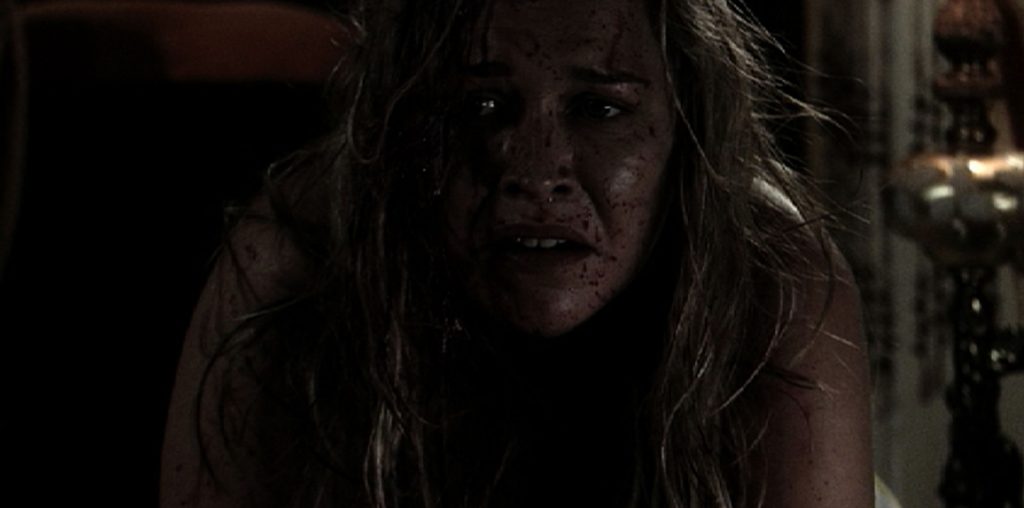
The inside of Atom Egoyan’s mind must be a strange place, where nothing moves in a straight line and no dream has a typical beginning or end. Egoyan’s previous films have all been told in various forms of flashbacks, stops and starts, stories within stories. At the end of his films, the characters are all rounded up, like in Tom Wolfe’s “Bonfire of the Vanities,” and are given swift judgement. This is not someone you’d want to ask for directions to the nearest shopping mall.
Almost all of Egoyan’s films feature an Armenian character or thread of some kind and no wonder since his wife, and “Ararat” star, Arsinee Khanjian, has appeared in all of his films. Now, Egoyan has finally made his most personal film to date, a film about the genocide of the Armenian people back in the early part of the twentieth century. Of course, most people don’t even know who the Armenians are period, and they most certainly don’t know about the massacre. In “Ararat,” Egoyan uses a film within a film storytelling approach to gain entry into the history of the massacre and to question the meaning of truth as it relates to how history is written.
The film in question is being made by an Armenian film director(Charles Aznavour) and his American screenwriter, played by Eric Bogosian. They have pieced together, they think, the exact events of the Armenian genocide, a genocide that was supposedly carried out by Turkey when they were at war with the Armenians. But were they at war? The events on which these claims are based took place in 1915 when the Turks, hailing from the Ottoman Empire, systematically wiped out two-thirds of the Armenian people during the reign of bloodshed. Soon, the filmmakers begin to question their facts and in desperation, they turn to a visiting Armenian historian, played by Arsinee Khanjian, who agrees to become their defacto technical adviser.
Well, that’s part of the story. What if I told you that one of the historian’s former husbands was a terrorist who was killed during his attempted assassination of a politician? What about her son, Raffi(David Alpay), the central character of the film, and the fact that he’s sleeping with the daughter from Khanjian’s other marriage, his stepsister?
At this point, “Ararat” begins to move in parallel lines as we open on Raffi who’s been in Armenia taking footage of Mt. Ararat so he can help himself answer questions about his Armenian heritage. As he tries to return to Canada with the footage(Would the filmmakers find his footage useful?), Raffi’s pigeonholed by a lonely and stubborn customs officer, played by Christopher Plummer, who suspects, mostly as an excuse to get to know the young man, that Raffi’s trafficking drugs.
“Ararat” is obviously Egoyan’s most ambitious and personal film to date. It asks some central questions: Who has the right to tell history? Does it matter how many people die during a supposed “Holocaust” whether it be one million(the estimated number of dead Armenians) or a handful? If just one person suffered, is that enough to condemn a race of people? How many victims does it take to form a genocide?
There’s an obvious parallel between the 1915 Armenian massacre and the Jewish Holocaust: Many people have accused Holocaust historians of exaggerating the numbers of victims, but does it matter? What about the Turks who were killed during the battle? What’s the difference between genocide and war?
These heavy issues point to “Ararat”’s weakness: Atom Egoyan’s inability to be completely objective in the telling of the story. Ironically, the biggest flaw in “Ararat” has nothing to do with the massacre itself, but the film within a film. It’s almost impossible to completely portray a film being made within a film. No director, however brilliant, can accurately fictionalize the making of a film, outside of the film he’s making. Well, except for Fellini who did a brilliant job of it in “8 1/2.” But somehow in “Ararat,” like so many others, we never feel like we’re seeing a real film being made. There’s too much talk and too many people walking around for no purpose.
Still, “Ararat” is a film that has many strengths, not the least of which is its towering ambition. I loved the scenes between the art historian and the director and the way she constantly corrects him about the details of history, and the relationship between the son and the customs officer evolves until we learn one secret after the other. Eventually, we flashback to the actual battle itself where we, and Egoyan, feel the slippery slope of revisionist history. Does anybody care about the Armenian massacre anyway? If not, should we feel guilty about that or just plead ignorance?
For Egoyan, the adventurous and exciting Canadian writer-director, perhaps “Ararat” is the end of a chapter in his life, the end of the story so to speak, from which he’ll move on from in his next films. “Ararat” isn’t a great film because it’s too convoluted and personal at times, but it’s a showcase of technical mastery; the way Egoyan interweaves the stories of the historical recreation, the relationship between the son and his stepsister and the mystery of the art historian’s dead husbands, is endlessly compelling. In a way, “Ararat” has so many story threads that I felt like I was watching a film decathlon and although “Ararat” doesn’t win the gold medal, it enters every single event.
